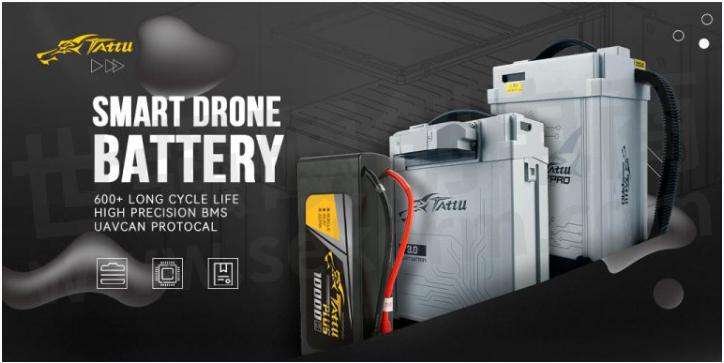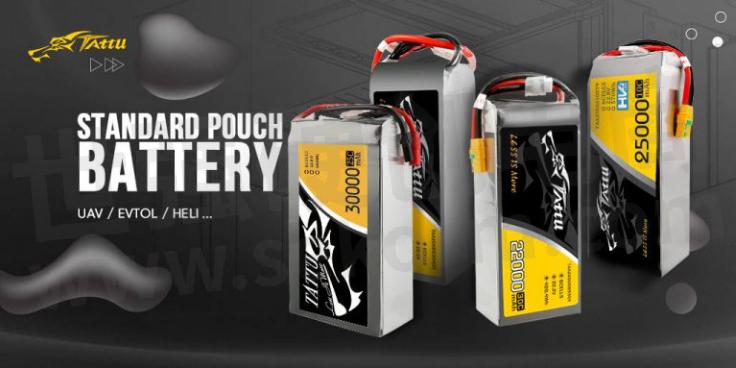Tips for maintenance and emergency disposal of agriculture drone battery

An agriculture drone (or plant protection drone) is a drone/UAV consisting of a flight platform (fixed-wing, helicopter, multi-axis vehicle), navigation flight control, spraying device, etc., with the help of ground remote control or navigation flight control, so that spraying operations can be realized, i.e., spraying seeds, chemicals, powders, etc.
Compared with traditional agricultural fieldwork, agriculture drones have the advantages of high operational accuracy, good maneuverability, lower cost, higher safety, and higher efficiency. But we all know that drones need lithium polymer batteries (LiPo) with high energy density, miniaturization, ultra-thin, lightweight, high safety and low cost, and other obvious advantages to complete efficient fieldwork tasks to provide its power source.
It can be seen that the importance of the drone battery to the agricultural spraying drone is self-evident, since this is the case, how is the agriculture drone battery daily maintained, and how to dispose of it when there is an emergency?
How to maintain the agriculture drone battery routine?
1. Check the battery regularly. Handles, wires, plugs, and check the damage to the appearance. Deformation, corrosion, discoloration, ragged surface, and whether the plug is too loose between the plug and the aircraft.
2. After each operation, you must wipe the appearance of the battery and plug it with a dry cloth to ensure that no pesticide residue to avoid battery corrosion. The battery temperature is high after the flight and needs to be charged after the battery temperature drops below 40°C (the optimal temperature range for battery charging is 5°C to 40°C). Charging the battery after its external temperature has dropped can greatly improve the battery’s service life. The summer temperature is relatively high, it is best not to expose the battery to the sun.
In winter, after the battery is discharged, the battery should be used useful insulation methods (such as the use of insulation boxes) to ensure that the battery temperature is maintained at 5 ℃ or above, and the battery life is significantly shortened in a low-temperature environment.
What should I do in case of an emergency?
When the battery is on fire during charging, first of all, you should cut off the power of the equipment, use asbestos gloves or clips to remove the burned battery, put it on the ground or in a bucket of fire sand, cover the burned lithium battery with an asbestos blanket, and put fire sand over the asbestos blanket to block the air.
If you need to scrap the exhausted battery, please thoroughly soak the agriculture drone battery in saltwater for more than 72 hours to ensure that it is completely discharged, and then dry it before doing the scrap process.
Do not use dry powder extinguishers to extinguish open fires because for solid metal chemical fires, a large amount of dry powder is required to mask the fire, which is corrosive contamination to the equipment. The use of carbon dioxide to extinguish fire will not pollute the environment and will not corrode the machine, but it can only achieve the effect of instantly suppressing the fire. It needs to be used together with sandstone and asbestos blankets. Blocking and suffocation is the best way to deal with the incineration of the drone batteries.

Tattu Smart Drone Battery Series
Agriculture drones are expensive. If a fire is found, professional support should be notified immediately to minimize property damage and personal injury!
The above is an introduction to the daily maintenance and emergency disposal methods of agriculture drone batteries. Mastering the daily maintenance knowledge and emergency disposal methods of agriculture drone batteries is homework that every agriculture drone operator must learn. It can greatly improve the cycle life of the battery of the agriculture drone, and allow the drone to play its role better. Reduce the operation, and maintenance costs and increase revenue!

Tattu Standard Drone Battery
Grepow (格瑞普) focuses on the production and customization of Drone/UAV batteries, including pouch cell battery packs, high voltage, low temperature, high discharge rate, high energy density NMC 811, and smart batteries. The customized solutions involve cells, BMS, chargers, etc. If you have any questions or battery solutions, please feel free to contact us at info@grepow.com.
- +1 Like
- Add to Favorites
Recommend
- The Grepow Tattu NMC 811 Battery – New Power For UAVs
- Grepow Won the 2021 Specialized Innovative Enterprise Award
- Grepow Tattu TA1000 Dual-Channel Smart Charger: The Versatile Charging Solution
- 2022 Commercial UAV EXPO | Grepow shows it‘s key products: Tattu Smart Battery, Smart Drone Battery, and TA3000 Charger
- Grepow Tattu Plus :the Smart Lipo Battery Pack That is Designed Especially for Unmanned Aerial Vehicles
- Tattu R-line version 5.0 makes an all-around improvement in performance and cycle life, which is now available
- Grepow was delightly present to witness AI Drone from the UZH VS Human Challenge as one of the partners
- What is a Smart Ring Battery and The Manufacturing Process?
This document is provided by Sekorm Platform for VIP exclusive service. The copyright is owned by Sekorm. Without authorization, any medias, websites or individual are not allowed to reprint. When authorizing the reprint, the link of www.sekorm.com must be indicated.






























































































































































































































































































































































































































































































































































































































































































































































































































































































